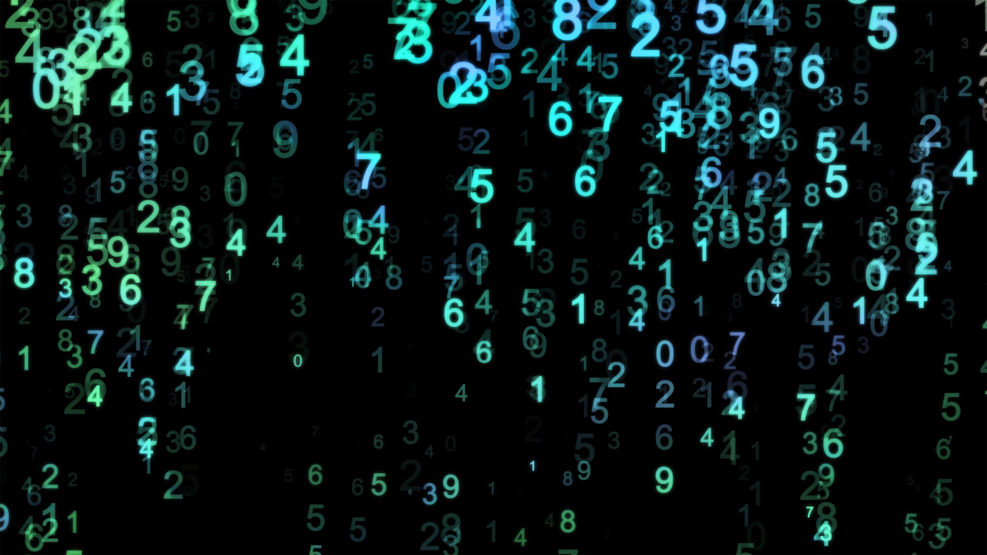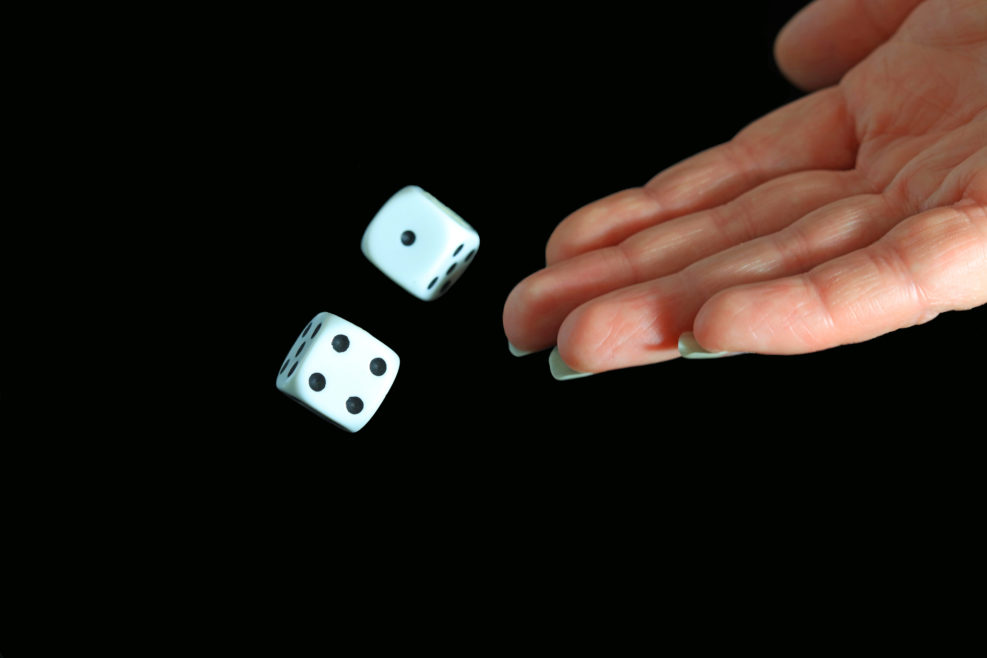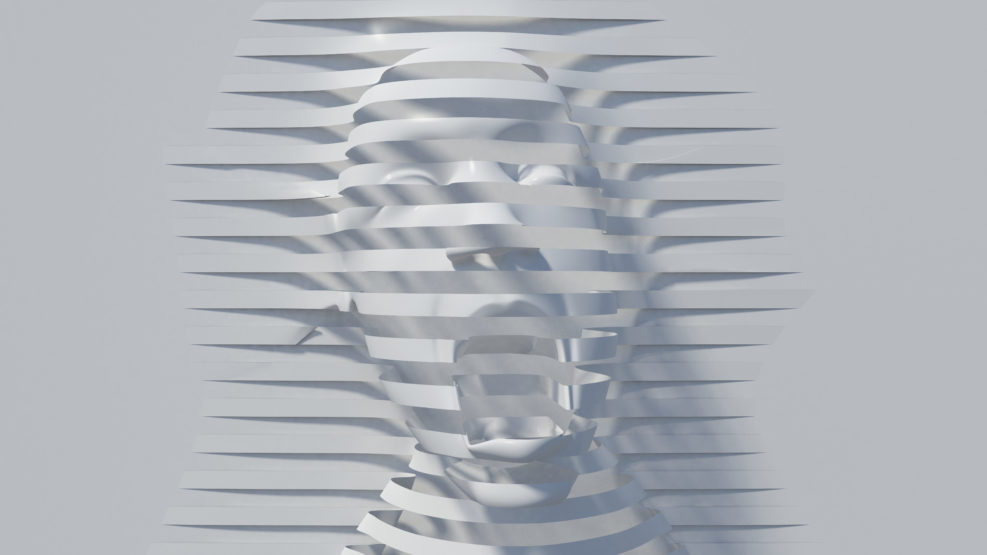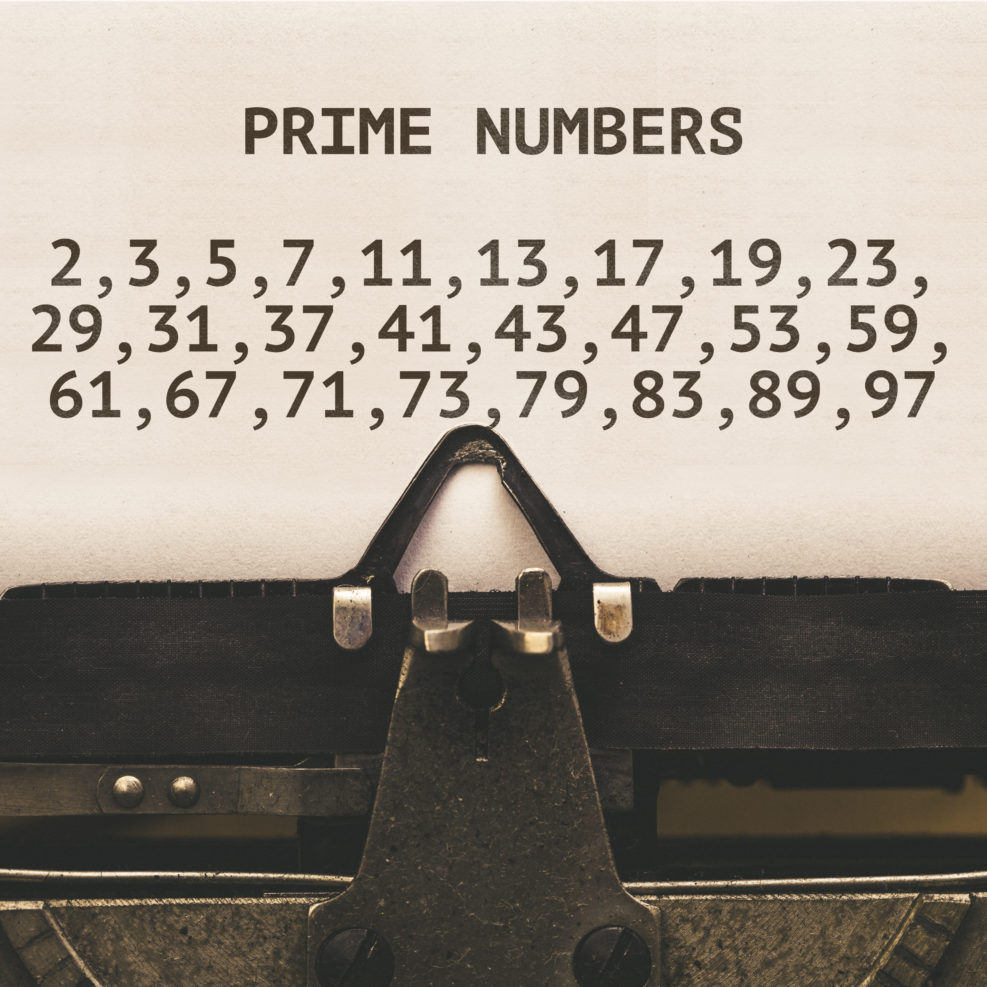
TagGregory Chaitin


The Philosopher’s Zombie Still Walks and Physics Can’t Explain It
Various thinkers try to show that the zombie does not exist because consciousness is either just brain wiring or an illusion, maybe bothCanadian science journalist Dan Falk tells us, the philosopher’s zombie thought experiment, “flawed as it is,” demonstrates that physics alone can’t explain consciousness. Not that many physicists haven’t tried. But first, what is the philosopher’s zombie (sometimes called the p-zombie)?: The experiment features an imagined creature exactly like you or me, but with a crucial ingredient – consciousness – missing. Though versions of the argument go back many decades, its current version was stated most explicitly by Chalmers. In his book The Conscious Mind (1996), he invites the reader to consider his zombie twin, a creature who is ‘molecule for molecule identical to me’ but who ‘lacks conscious experience entirely’.” He does everything he is supposed to do but experiences Read More ›

Randomness, Information Theory, and the Unknowable
In the 1960s, mathematician and computer scientist Gregory Chaitin published a landmark paper in the field of algorithmic information theory in the Journal of the ACM – and he was only a teenager. Since then he’s explored mathematics, computer science, and even gotten a mathematical constant named after him. Robert J. Marks leads the discussion with Professor Gregory Chaitin on Read More ›

George Gilder: An Economic Genius Talks About Gaming AI
George Gilder talks to Robert J. Marks about his book Gaming AI: Why AI Can’t Think but Can Transform Jobs. Show Notes Additional Resources

Randomness is Not a Scientific Explanation
We can never know if anything is truly randomIt is common in the sciences to claim aspects of our universe are random: In evolution, mutations are random. In quantum physics, the wave collapse is random. In biology, much of the genome is random. In business theory, organizational ecologists state new ideas are random. There is a general idea that everything new has its origins in randomness. This is because within our current philosophy of science, the two fundamental causes in our universe boil down to randomness and necessity. Since necessity never creates anything new, then by process of elimination the source of newness must be randomness. Similar to how the ancient Greeks believed the universe originated from chaos. Here’s the irony of the view that whatever is unique Read More ›

Panpsychism Is, in Angus Menuge’s View, a Desperate Move
But he thinks it is worth keeping an eye on as an understandable reaction to materialismIn Walter Bradley Center director Robert J. Marks’s second podcast with philosopher Angus Menuge, the big topic is the perennial “Hard Problem of consciousness and various proposed solutions. Last time, they talked about the surprisingly large philosophical problem created by a concept like “red.” This time, they talk about whether Integrated Information Theory (IIT) and panpsychism in general are a way out of the dead end of naturalism. That is, if our science hypothesis is that consciousness is just an illusion, then we don’t — and can’t — have a hypothesis. There must be a better solution than that: https://episodes.castos.com/mindmatters/Mind-Matters-134-Angus-Menuge.mp3 This portion begins at 10:35 min. A partial transcript, Show Notes, and Additional Resources follow. Robert J. Marks: Okay. Let’s Read More ›

Dr. Angus Menuge: Models of Consciousness (Part II)
What is it like to see a red rose? To smell a red rose? To feel pain? In this week’s podcast, Dr. Robert J. Marks and Dr. Angus Menuge continue their discussion on philosophies of the mind, delving into competing definitions of consciousness. Show Notes Additional Resources

How Erik Larson Hit on a Method for Deciding Who Is Influential
The author of The Myth of Artificial Intelligence decided to apply an algorithm to Wikipedia — but it had to be very specificHere’s another interview (with transcript) at Academic Influence with Erik J. Larson, author of The Myth of Artificial Intelligence: Why Computers Can’t Think the Way We Do (2021). The book was #2 at Amazon as of 11:00 am EST today in the Natural Language Processing category. In this interview, Larson talks about how he developed an algorithm to rank people by the amount of influence they have, using Wikipedia. That was one of the projects that got him thinking about myths of artificial intelligence. It began with his reading of Hannah Arendt, a philosopher of totalitarianism: Excerpt (0:04:25.0) Erik Larson: And she has a whole philosophy of technology that I was reading as background to write The Myth of Artificial Read More ›

Fermat’s Last Tango: Lively Musical For Nerds
The ghost of Fermat and other giants from the Aftermath Club help (frustrate?) a mathematician’s effort to prove Fermat’s famous Last TheoremIf you are a nerd, the musical Fermat’s Last Tango (2001) is hilarious. Mathematician Pierre de Fermat proposed his last theorem around 1637. He wrote a note in the margin of a copy of Arithmetica, a book written by a 3rd-century Alexandrian mathematician, Diophantus. Fermat’s short scribble claimed that he could prove that a specific Diophantine equation had no solution. But whatever Fermat was thinking died with him in 1665. A proof of Fermat’s last theorem eluded mathematicians over 300 years until Princeton’s Andrew Wiles proved it in 1995. Fermat’s Last Tango is a fantasy account of Wiles’s life while he was working on the proof. The play is a musical sprinkled with nerdy inside jokes. For example, part of Read More ›

The “Jump” of Chaitin’s Omega Number
Gregory Chaitin explains, “For any infinity, there’s a bigger infinity, which is the infinity of all subsets of the previous step”In last week’s podcast, “The Chaitin Interview V: Chaitin’s Number,” Walter Bradley Center director Robert J. Marks asked mathematician Gregory Chaitin (best known for Chaitin’s unknowable number) if the unknowable number could prove (or disprove) Goldbach’s Conjecture that every even number can be expressed as the sum of two primes. This task is harder than it first appears because even numbers go on indefinitely. A proof that Christian Goldbach (1690–1764) was right or wrong must show that even numbers must be like that, no matter how big they are or how many of them there are. This time out, Dr. Marks and Dr. Chaitin discuss what we can know about Omega numbers — and where famous mathematicians are buried. This Read More ›

Could Chaitin’s Number Prove Goldbach’s Conjecture At Last?
Chaitin notes that the problem grows exponentially and the calculations get quite horrendousIn last week’s podcast, “The Chaitin Interview V: Chaitin’s Number,” Walter Bradley Center director Robert J. Marks continued his conversation with mathematician Gregory Chaitin, best known for Chaitin’s unknowable number. One thing they discussed was the usefulness of philosophy, with Chaitin saying that if he had had to do practical work 60 years ago, there wouldn’t be practical research today based on the Omega number. But then they turned to the question of whether the unknowable number could prove Goldbach’s famous Conjecture: This portion begins at 17:17 min. A partial transcript, Show Notes, and Additional Resources follow. Robert J. Marks (pictured): The poster problem for the Turing halting problem, is Goldbach’s Conjecture, which says that every even number can be Read More ›

Why Impractical Things Like Philosophy Are Actually Quite Useful
Chaitin argues that the human spirit is capable of doing both practical things and impractical things which may have practical consequences laterIn last week’s podcast,, “The Chaitin Interview V: Chaitin’s Number,” Walter Bradley Center director Robert J. Marks continued his conversation with mathematician Gregory Chaitin, best known for Chaitin’s unknowable number. Last time, they looked at how Chaitin’s unknowable number relates to computer pioneer Alan Turing’s vexing halting problem in computer science. This time, they look at the way pure mathematics has a way of being highly practical: It creates a basis for new understanding, leading to technical breakthroughs: This portion begins at 09:50 min. A partial transcript, Show Notes, and Additional Resources follow. Gregory Chaitin: There are always going to be a few of us who like to do practical things. That’s part of my personality too, but there’s also, Read More ›

Chaitin’s Number Talks To Turing’s Halting Problem
Why is Chaitin’s number considered unknowable even though the first few bits have been computed?In last week’s podcast,, “The Chaitin Interview V: Chaitin’s Number,” Walter Bradley Center director Robert J. Marks continued his conversation with mathematician Gregory Chaitin( best known for Chaitin’s unknowable number) on a variety of things mathematical. Last time, they looked at whether the unknowable number is a constant and how one enterprising team has succeeded in calculating at least the first 64 bits. This time, they look at the vexing halting problem in computer science, first identified by computer pioneer Alan Turing in 1936: https://episodes.castos.com/mindmatters/Mind-Matters-128-Gregory-Chaitin.mp3 This portion begins at 07:16 min. A partial transcript, Show Notes, and Additional Resources follow. Robert J. Marks: Well, here’s a question that I have. I know that the Omega or Chaitin’s number is based Read More ›

Has the United States Lost Silicon Valley?
Once on friendly terms with the U,S, Department of Defense, Silicon Valley must consider the views of its friends in ChinaRecently, we learned that China had, for the first time, surpassed the United States in AI patent filings: The development was revealed by Li Yuxiao, Deputy Head of the Chinese Academy of Cyberspace Studies at the 7th World Internet Conference (WIC), reports SCMP. With this, China is now bolstering its position of being a leader in AI. As per the report, China had filed more than 110,000 artificial intelligence patents last year, more than the patents filed by the United States but the number of patents filed by the country has not been disclosed. “China surpasses US for the first time in artificial intelligence patent filings” at TECHregister (November 27, 2020) Now, people have been claiming that innovative competitiveness is Read More ›

Is Chaitin’s Unknowable Number a Constant?
One mathematics team has succeeded in the first 64 bits of a Chaitin Omega numberIn this week’s podcast, “The Chaitin Interview V: Chaitin’s Number,” Walter Bradley Center director Robert J. Marks continued his conversation with mathematician Gregory Chaitin, best known for Chaitin’s unknowable number. In this segment, Dr. Marks and Dr. Chaitin discuss whether the unknowable number is really a number… or is it a constant? In earlier podcasts linked below, they have discussed a variety of topics ranging from gifted mathematicians of the past through how to understand creativity in a mathematical way—and more. https://episodes.castos.com/mindmatters/Mind-Matters-128-Gregory-Chaitin.mp3 This portion begins at 01:32 min. A partial transcript, Show Notes, and Additional Resources follow. Robert J. Marks (pictured): I want to clear up something first of all. Stanford’s Thomas Cover and Joy Thomas wrote a book that Read More ›

Can Mathematics Help Us Understand Consciousness?
Gregory Chaitin asks, what if the universe is information, not matter?In last week’s podcast, “The Chaitin Interview IV: Knowability and Unknowability,” Walter Bradley Center director Robert J. Marks interviewed mathematician Gregory Chaitin, best known for Chaitin’s Unknowable Number, on, among other things, consciousness. What can mathematics contribute to the discussion. Also, what does Chaitin think about panpsychism (everything is conscious”)? The discussion began with reference to David Chalmers’s 1996 book, The Conscious Mind: In Search of a Fundamental Theory, in which Chalmers coined the term “Hard Problem of Consciousness.” The term acknowledged what everyone knew, that human consciousness is a very difficult problem to understand, especially from a materialist perspective.Are there other approaches? Chaitin offers a look at the challenge panpsychism presents to materialism: https://episodes.castos.com/mindmatters/Mind-Matters-127-Gregory-Chaitin.mp3 This portion begins at 28:25 Read More ›

The Chaitin Interview V: Chaitin’s Number
Listen in as Robert J. Marks picks the mind of Professor Gregory Chaitin about Chaitin’s number – a number that has been called “mystical and magical”. How does this number work? Why do some people call it “Chaitin’s constant”? What is the usefulness of philosophizing in mathematics? Show Notes Additional Resources

Why Human Creativity Is Not Computable
There is a paradox involved with computers and human creativity, something like Gödel’s Incompleteness Theorems or the Smallest Uninteresting NumberIn last week’s podcast, “The Chaitin Interview IV: Knowability and Unknowability,” Walter Bradley Center director Robert J. Marks interviewed mathematician Gregory Chaitin, best known for Chaitin’s Unknowable Number, on a number of things, including whether computers can show creativity. Chaitin has thought a lot about that: https://episodes.castos.com/mindmatters/Mind-Matters-127-Gregory-Chaitin.mp3 This portion begins at 21:34 min. A partial transcript, Show Notes, and Additional Resources follow. Robert J. Marks: We’re talking, just in general, about the unknowable. Roger Penrose recently won a Nobel Prize for his work with Stephen Hawking on black hole theory. He also wrote a book called The Emperor’s New Mind: Concerning Computers, Minds and The Laws of Physics (1989) and he followed it up with The Shadows of the Mind: Read More ›

The Paradox of the Smallest Uninteresting Number
Robert J. Marks sometimes uses the paradox of the smallest “uninteresting” number to illustrate proof by contradiction — that is, by creating paradoxesIn this week’s podcast, “The Chaitin Interview IV: Knowability and Unknowability,” Walter Bradley Center director Robert J. Marks interviewed mathematician Gregory Chaitin on how he proved that the number that determines whether computer programs are elegant (in the sense of maximally efficient) is “unknowable.” As Dr. Chaitin explained in the segment published yesterday, any solution would be contradictory. Thus, his proof is a proof by contradiction. By way of illustrating the concept of proof by contradiction, Dr. Marks then offered his proof by contradiction that “all positive integers — numbers like 6 or 129, or 10 100 — are interesting.” This portion begins at 19:45 min. A partial transcript, Show Notes, and Additional Resources follow. Robert J. Marks: If [some Read More ›

Why the Unknowable Number Exists But Is Uncomputable
Sensing that a computer program is “elegant” requires discernment. Proving mathematically that it is elegant is, Chaitin shows, impossibleIn this week’s podcast, “The Chaitin Interview IV: Knowability and Unknowability,” Walter Bradley Center director Robert J. Marks interviewed mathematician Gregory Chaitin on his “unknowable number.” That’s the topic of this series, based on the fourth podcast. Last week, we tried getting to know the unknowable number. Today, let’s look at the question of how we know that the number is unknowable — instead of merely non-computable. Lots of things are non-computable but we do not expect that to be true of numbers. Let’s see what’s happening here, as Chaitin offers a walk through his proof that it really is unknowable: https://episodes.castos.com/mindmatters/Mind-Matters-127-Gregory-Chaitin.mp3 This portion begins at 09:43 min. A partial transcript, Show Notes, and Additional Resources follow. Robert J. Marks: Read More ›